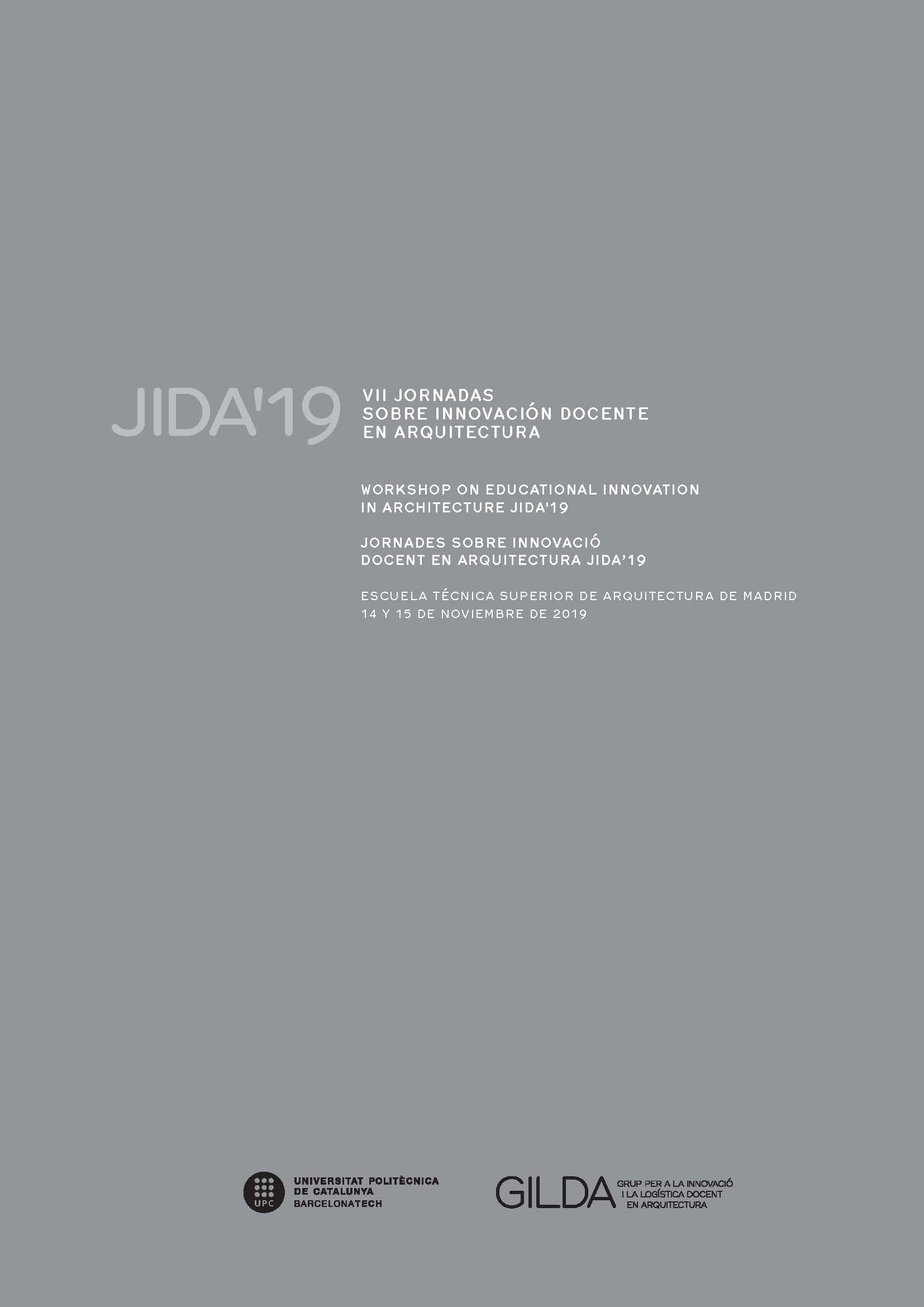¿Qué deberíamos enseñar? Reflexión en torno al Máster Habilitante en Arquitectura
DOI:
https://doi.org/10.5821/jida.2019.8337Resumen
Yuval Noah Harari propone Pensamiento Crítico, Comunicación, Colaboración y Creatividad como asuntos claves para la enseñanza en el siglo 21. El Master Habilitante de la ETSABarcelona, durante los 4 años de recorrido entre 2015 y 2019, ha tenido estos cuatro asuntos como eje vertebrador de la metodología implementada. El principio ha sido que no sólo ha de preparar a los futuros arquitectos para su homologación como profesionales independientes, sino que ha de comprobar el grado de madurez, la capacidad de esos alumnos en desenvolverse en situaciones complejas contemporáneas: la periferia de la ciudad de Barcelona, situaciones de frontera, nuevos usuarios, reprogramación de espacios industriales obsoletos, programas híbridos, etc.
Citas
ADORNO, T. W. (2004). L'assaig com a forma, Publicacions Universitat de València, p. 36.
BAUMAN, Z. (2013). Tiempos lÃquidos. Vivir en una época de incertidumbre. Original: Liquid Times. Living in an Age of Uncertainty, 2007.
DE CERTEAU, M. (1988). The Practice of Everyday Life, citado por Fernandez Per, Aurora (2011) en "Editorial", de Strategy and Tactics in Public Space, A+T 38.
DEPLAZES, A. y ELSENER, C. (2010). "Prólogo" en Deplazes, A. (ed.). Construir la arquitectura. Barcelona: GG.
DELORS, J. (1996). “Los cuatro pilares de la educación†en La educación encierra un tesoro. Informe a la UNESCO de la Comisión internacional sobre la educación para el siglo XXI, Madrid, España: Santillana/ UNESCO. p. 91-103.
FRANCH, Eva. (2018). "Vision Statement", en Candidates for the Director of the Architectural Association School of Architecture, <http://search.aaschool.ac.uk/wp-content/uploads/2018/02/CandidateVisionStatements-1.pdf> [Consulta: 6 septiembre 2019]
HARARI, Y. N. (2018). "Education" en 21 Lessons for the 21st Century. Londres: Penguin, p. 259-268.
HOLL, S. (2011). "Prologue" en This is Hybrid, A+T.
NEA. (2019). US Nacional Education Association "Preparing 21st Cencury Scudencs for a Global Society. An Educator’s Guide to the “Four Csâ€, <http://www.nea.org/ assecs/docs/A-Guide-to-Four-Cs.pdf>, [Consulta: 20 julio 2019].
SENNET, R. (2013). Together: The Rituals, Pleasures and Politics of Cooperation. Londres: Penguin.
SINEK, S. (2019). "Start With Why: How Great Leaders Inspire Everyone to Take Action" en TED Talks <https://www.ted.com/talks/simon_sinek_how_great_leaders_inspire_action?language=es#t-409845> [Consulta: 10 de septiembre 2019]
SOLÀ-MORALES, M. (1997). "Territoris sense model" en Papers. Regió Metropolitana De Barcelona, núm. 26, enero, p. 21-27.
STEELE, B. (2005). "Personalidades escindidas" en Ortega, Luis. (2009, ed.), Digitalizacion toma el mando. Barcelona: GG, p. 85-91.
TORRES MENARGUEZ, A. (2019). entrevista a Henry Giroux “La crisis de la escuela es la crisis de la democraciaâ€, entrevista en El Pais 14 de mayo 2019. <https://elpais.com/sociedad/2019/05/09/actualidad/1557407024_184967.html> [Consulta: 14 de mayo 2019]
WALKER, E. (2010). "Introducción" en Walker, E., (Ed.) Lo Ordinario. Barcelona: GG, p. 7-9.






















